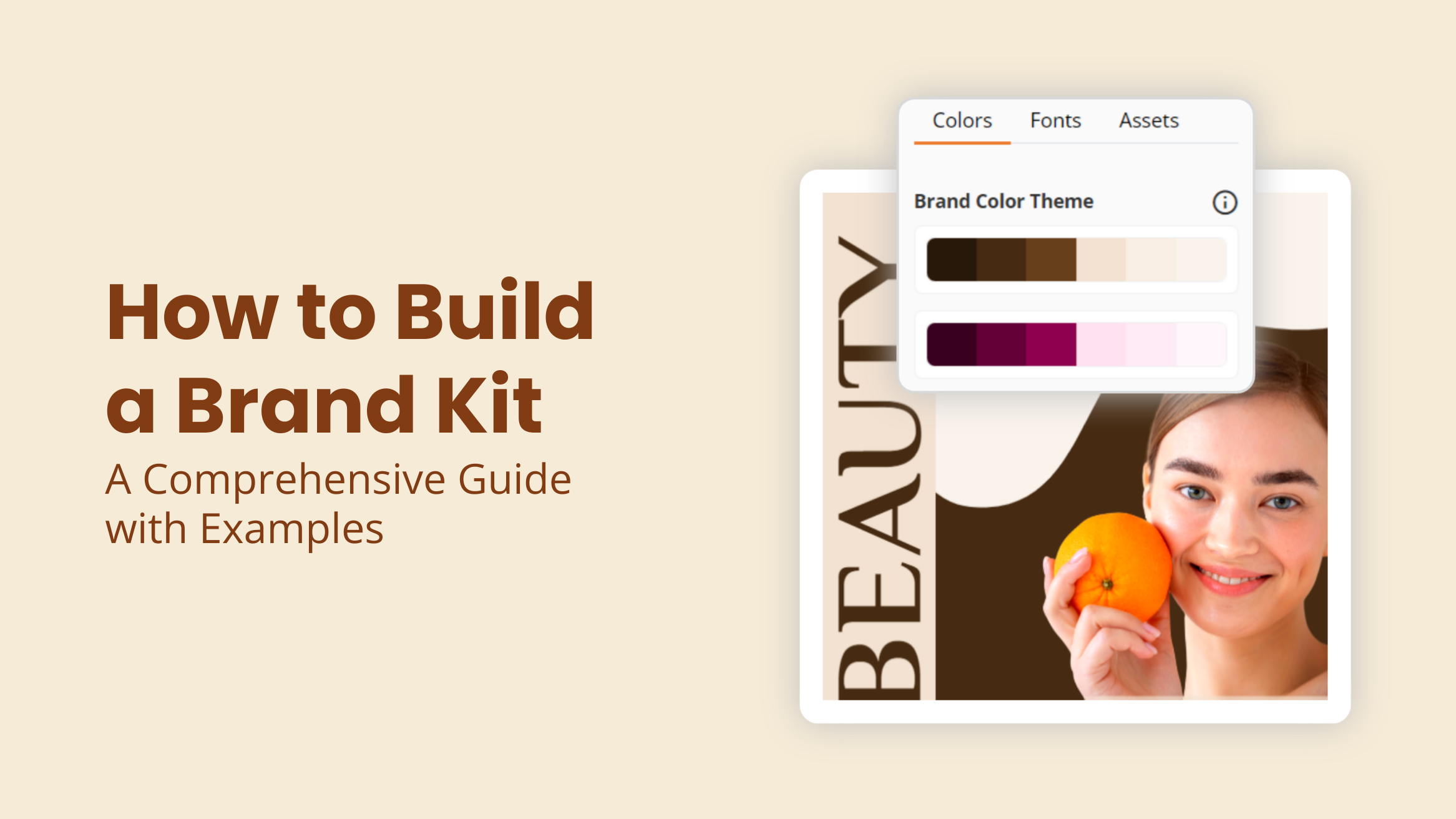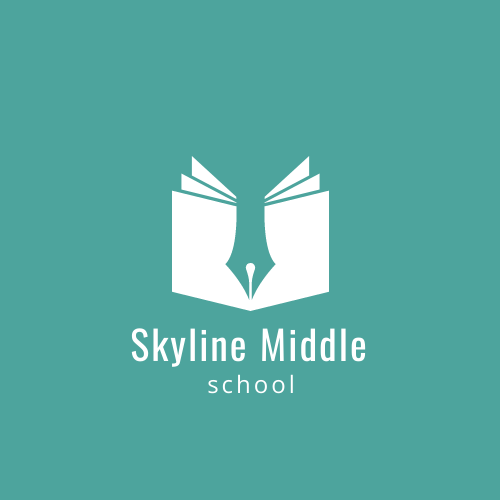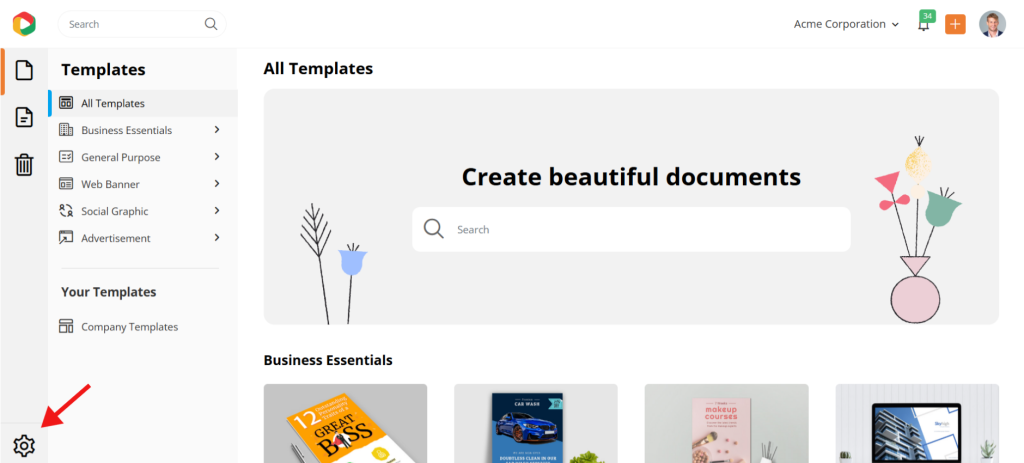
How to Build a Brand Kit: A Comprehensive Guide with Examples

Your brand is the face of your business, and a lot depends on the face value. A consumer’s decision to buy a product depends on brand recognition to a large extent. According to Forbes, consistent brand presentation can increase revenue by up to 23% as it helps communicate with your target audience and build trust.
However, maintaining consistency in branding across various platforms can take time and effort. But you can easily manage that with the help of a brand kit. A brand kit is an excellent tool that is an accessible resource for all the essential brand elements, such as logos, visuals, and color palettes. But, you may ask, “How to build a brand kit.”
How to Build a Brand Kit
- Define Your Brand Identity: Understand the brand’s position in the market, business objectives, and the image of the brand you wish to portray.
- Analyze Your Target Audience: Research the audience’s demographics, interests, and problems.
- Observe Your Competitor Brand Style: Research the competitors in your niche.
- Assemble all the Brand Assets: Set your brand’s values, vision, tone, mission, and goals.
- Select Various Brand Logo Iterations: Create a logo for your brand that represents it best and try its variations.
- Align Typography and Visual Elements: Create brand fonts and other visual elements like shapes, icons, patterns, images, etc.
- Implement Brand Kit Across Various Platforms: Check these assets on various marketing collaterals and make necessary changes.
This article will elaborate on a brand kit, its purpose, and crucial elements. Also, get a step-by-step guide to building a brand kit from scratch. Moreover, get ready to be inspired by some famous brand kit examples.
Table of Contents
What is a Brand Kit
A brand kit is a collection of all the visual elements and guidelines that help maintain brand cohesiveness across various platforms. In simple terms, it consists of everything through which one identifies the brand. The brand kits are helpful for new team members, freelancers, and existing colleagues to use exact brand assets like typography, color, logo variants, images, etc. In addition, it is a quick way to get familiar with the brand language and presentation.
Why Do You Need a Brand Kit
Before answering “how to build a brand kit,” let’s learn about the importance of the brand kit for a business or whether you need it. Brand kits save a lot of time that one would spend searching for the exact shade, font, effects, and visual details without referring to it. Also, it helps in making consistent designs in an organized manner, maintaining a smoother workflow.
The brand assets included in the brand kit help in better representation on the website, graphic designs, emails, social media presence, and marketing documents.
Further, implementing brand assets across various marketing collaterals increases brand awareness. Thus, creating a brand kit to uplift your brand’s identity is one of the most crucial parts of your business.
Difference Between Brand Kit and Brand Style Guide
Many need clarification on brand kits with brand style guides. While both terms are related, they are different. A brand style guide is a document or PDF compiling all the guidelines and visual details of the brand. It helps understand the vision, tone, logo, fonts, typefaces, imagery style, and visual information of the brand image. It is the foundation on which one can build a brand kit. If the brand style guide is a set of instructions, the brand kit is the tool for executing the brand style.
To illustrate, Starbucks‘ brand style guide depicts every crucial aspect of the brand.
What is Included in a Brand Kit
The brand kit includes all the visual assets that help build the brand’s identity. Ideally, a brand revises these assets after a certain period. Let’s have a look at each of them.
Brand Logo
A logo represents the face of the brand. It holds a lot of importance as 60% of consumers avoid brands with an unfamiliar or unattractive logo. An eye-catching logo communicates the tone and vision of the brand. But you may ask, “How to design a logo for a company?”. If you don’t want to create a logo from scratch, use DocHipo logo templates. With DocHipo, you can get templates for every industry, such as education, real estate, fashion, travel, etc.
Here are some stand-out logo templates for you.

Get This Template and More

Get This Template and More
Moreover, get detailed information about How to Create a Logo Online.
Also, a brand has various logo variants to use at different places. Ensure that you add multiple logo versions, which can be primary, secondary, or a logo version with the icons.
Brand Font
We often hear that how you say it is more important than what you say. It brings us to how you write for your brand – its typography. One should collaborate design and typography like a match made in heaven to communicate effectively. For instance, take a look at these two logo templates from DocHipo.

Get This Template and More

Get This Template and More
The former gives an elegant and sophisticated vibe, while the other is casual and playful. Include font, color, typefaces, and text effects in the brand kit. If your brand uses different types of fonts for various texts, include all of them.
Further Reading
Brand Colour
Brand color is crucial to any brand for recognition. Color improves brand recognition by up to 80%, which means you need to maintain the exact shades of the color palette. It’s not just about red, yellow, or orange but, more importantly, vermillion red and crimson red. Therefore, brands use hex color codes while creating a brand color palette.
In addition to the primary colors, a brand kit should include secondary, tertiary, and neutral colors. It helps the team to understand the use of color palettes for various purposes, maintaining consistency across digital and print media.
Also, learn more about How to Choose Colors for Your Brand to create a brand color palette.
Brand Visuals
Besides typography and color, brand icons, symbols, and images are essential to maintain consistency. Many brands use specific shapes and icons to differentiate them from other brands.
Further, add small details like scaling and the utility of white space in the brand kit to showcase your brand’s visibility. For example, Walmart mentions all the types of icons in the brand guide to maintain consistency.
Also, your brand kit can include images or types of pictures for marketing collaterals. Remember, the aim of your brand kit should be to remain as organized as possible.
Brand Kit Examples
We have discussed brand assets and the necessary aspects of making a brand kit. Let’s take inspiration from professional branding kit examples before creating your kit.
1. Netflix
The brand emphasizes using its logo shape and color to preserve its identity. There are specific guidelines for using logos against different backdrops and contrast levels. Netflix takes the typefaces of the logo seriously to maintain harmony across various devices.
2. Nike Pro Services
Nike’s brand guidelines explain the ideation process behind the brand’s loyalty program. The brand uses explicitly geometric shapes and patterns in various places, including typefaces, color palettes, and spacing. Nike aims to keep the packaging and design exclusive to this program to give its consumers special treatment.
3. Hulu
Hulu’s Big Green Guide is casual and amusing, portraying the friendly brand voice. The guideline further elaborates on the global design principles, toolkits, and trademarks. Moreover, Hulu also shares the type of illustrations and white space utilization to explain the visual content to graphic designers.
4. Spotify
Spotify’s brand guide extensively explains the use and misuse of the brand logo. The green-colored logo might seem small and simple, but there is a detailed explanation for using its variations.
5. Asana
Asana gives a straightforward layout, including the font, color, and logo guidelines. It is short and organized, with essential information about how to and how not to use the brand assets. In addition, Asana also guides users on using the logo in different spaces.
6. Audi
Audi’s guidebook is an excellent brand kit example that contains minute details. In addition to logo variations, colors, and typefaces, the brand guides typography in different languages. Since textile printing is a significant section, Audi illustrates the details about printing the brand name and logo on apparel.
7. TikTok
TikTok’s guidebook is dynamic and interactive, expressing the core brand values. The user can opt to explore different sections for brand assets in detail. The vibrant image of the brand speaks for itself through the brand guide.
8. Tata
Tata specifies the use of brand assets for various industries. The brand extends to different sectors for which it mentions separate guidelines for logo use. Therefore, Tata’s group trademark differs from that of Tata Steel. In addition, the guide highlights all the colored trademarks.
9. Instagram
Instagram brand guidelines elaborate on using glyph icons that act as its logo. The brand specifies the minimum sizes and clear spaces. Also, it gives a detailed description of using the glyph files under various circumstances.
10. Shopify
Shopify’s brand guidelines revolve around the logo specifications. The brand illustrates logos on shopping bags and in print and digital media. Shopify also includes a CTA button on the guideline page to leverage sales opportunities.
How to Build a Brand Kit
Building a brand kit takes work for a beginner. As mentioned, the brand style guide plays a fundamental role in creating a brand kit. Also, one should have a plan to assemble all the crucial elements of the brand kit. So, you might be wondering, how to create your first brand kit? Don’t worry, this section will guide you through building a brand kit from scratch.
Define Your Brand Identity
The first step is understanding your brand and what it represents. It is easy to think about the brand image as your brand is an extension of your vision. The brand personality depends on some essential aspects such as:
- Brand’s position in the market
- Business objectives
- Target customers
- Image of the brand you wish to portray
Analyze Your Target Audience
Analyzing your target audience is crucial as it better explains the consumers’ needs, values, and preferences. Most importantly, you should ask a few questions about your target audience related to
- Demographics
- Interests
- Problems
Observe Your Competitor’s Brand Style
Next, you can thoroughly research the competitors in your niche. It will help you create a different factor you can take advantage of. You can use Google Search and social media to research the competitors and set up interviews to learn more.
Assemble all the Information About the Brand Image
Once you have researched your target market and competitor, it’s time to build assets based on your brand story. To be organized, compile all the information to set your brand’s values, vision, tone, mission, and goals.
Select Various Brand Logo Iterations
A brand logo is one of the most essential marketing tools. Make a logo for your brand that represents the best. Also, try various logo iterations and color combinations and create in a high-resolution format. Further, ensure that the logo is scalable to work with different sizes.
Align Typography and Visual Elements
Once you finish the logo, create brand fonts and other visual elements like shapes, icons, patterns, images, etc. Set your brand’s primary and secondary colors using the color wheel theory to bring the best combinations. Moreover, align all the brand elements with the brand’s personality.
Implement Brand Kit Across Various Platforms
After creating the kit, apply the assets to create brand kit template designs. Check these assets on various marketing collaterals and make any necessary changes in your brand kit.
How to Build a Brand Kit with DocHipo
You are ready to build your brand kit, but first, you need a suitable tool to execute your plan. Let’s see how to make a brand kit and apply it to your designs in DocHipo. Sign up with DocHipo and get access to thousands of templates and design assets to make on-brand documents.
1. Set up Your Brand Name
After signing up, you will land on the DocHipo homepage. Select the Company Settings in the bottom left corner of the screen.

Now, select the Brands option from the left menu and click the ‘Create a Brand’ button at the center of the screen to generate identity kit with logo.
Create a branding kit business, write your brand name and press “save”.
2. Set up the Brand Assets
After creating the brand name, develop essential elements for the brand kit, like brand colors, fonts, images, logos, etc.
When we consider brand color meanings, you need to upload all the primary and secondary colors using the hex codes.
Next, add brand fonts for various text types, such as headings, subheadings, and body text. You can also choose from the preset font library or upload custom fonts.
Then, add the brand logo and its variants in a go. You can upload logos in SVG format and adjust the color inside the editor while designing.
You can also use DocHipo’s Logo templates to get your hands on some fabulous designs to create brand kit for logo.
Further, upload images and videos your team can use while designing various documents for the brand under the brand images and videos section, respectively.
3. Applying Brand Kit to Designs
After creating the brand kit, it’s time to see how to apply it to your designs. First, select a template from DocHipo. Here, we will take a Beauty Facebook ad template.
Further, learn to leverage DocHipo for various industries.
Now, select your favorite template from multiple options to get started.
In the DocHipo editor, choose the brand kit generator and apply the brand color theme, font, images, and logo.
Customize the template using the brand assets to make an on-brand design within minutes.
Learn how to create a brand kit in DocHipo with this video.
Create Your Brand Identity with a Brand Kit Using DocHipo
You have learned all about how to create your first brandkit with the examples that must have inspired you to create one. Remember to conduct primary research and planning before selecting the brand assets. Also, you can always change the assets whenever you want. With DocHipo, you can create brand kit online and apply it to several template designs. Sign up with DocHipo and build your brand kit for free!
FAQs
What does a brand kit consist of?
A brand kit consists of all the design elements necessary to maintain consistency across all the designs of the brand across various platforms. It mainly includes:
- Brand logo
- Brand colors
- Brand fonts
- Brand visuals
How to build a brand toolkit?
You can quickly build a brand toolkit with the help of these steps:
- Define Your Brand Identity
- Analyze Your Target Audience
- Observe Your Competitor Brand Style
- Assemble all the Information about the Brand Image
- Select Various Brand Logo Iterations
- Align Typography and Visual Elements
- Implement Brand Kit Across Various Platforms
How do I create a free brand kit?
Building a brand toolkit is easy, as many tools are available for free. First, you should clearly understand your brand style guide to get started. Next, you can opt for a tool like DocHipo that helps you create a brand kit seamlessly.


